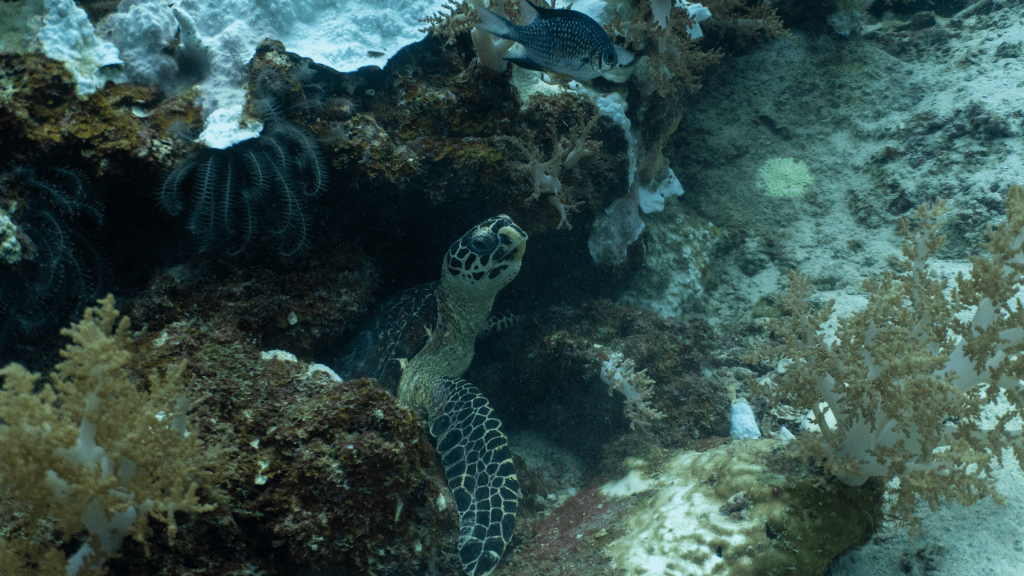Green sea turtle

The Green sea turtle is larger than other species in its family (Cheloniidae). The carapace (shell) of an adult male reaches up to 108 cm in length, while a female's carapace can reach up to 141 cm. The weight of large turtles reaches 200 kg, and in rare cases, even 400 kg. The rounded-oval, low-profile carapace is covered with large horny scutes, the edges of which never overlap. There is typically one claw on each front flipper.
The coloration of the Green sea turtle varies depending on its habitat, ranging from olive-green to almost black. The carapace may have yellowish spots, often with white edging. The ventral side (plastron) is white or yellowish with dark edges on the flippers.
The head of the Green turtle is also covered with large, symmetrical scutes, and the front part of the snout is rounded. There is one pair of prefrontal scutes above the nose. The eyes of the Green turtle are large, like those of other sea turtles, with a round pupil and a distinctive lens-shaped eyelid opening directed backward and upward.

Males are easily distinguished from females by their more flattened and elongated carapace, and especially by their much longer tail (over 20 cm). Powerful front limbs – flippers, resembling oars – help them move at speeds of up to 10 kilometers per hour.
Normally, the Green sea turtle (Chelonia mydas) is active mainly during the day, but additional nocturnal activity has been noted. Recently hatched green turtles during their migrations were also more active at night. While resting, adult turtles can remain underwater for several hours. Young turtles sleep on the surface, as they are not yet capable of staying underwater for long periods. A characteristic sleeping posture for hatchlings involves folding their front flippers back over their shell. Turtles sleep either on the surface or on the bottom under reef or rock ledges.
The documented lifespan of green turtles is 75 years. The Green turtle gets its name from the color of the fat accumulated in its body. In the wild, the Green turtle feeds on algae, seagrasses, mollusks, corals, and other marine organisms.

